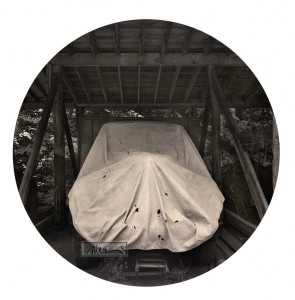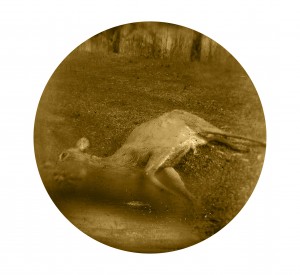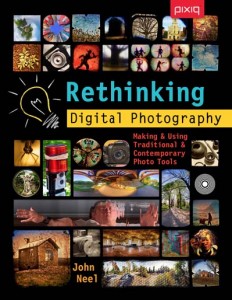It’ may be hard for some to imagine that there was a time when snapshot images were produced in the round.
We rarely see images that are anything other than the usual rectangular output from our digital cameras. Since digital started to overshadow film, the square image, which was common throughout the late 20th century is also seldom seen in more recent practice.
Early processes such as Daguerreotype and Tintype were often framed in circular frames or placed into cases with round or oval shaped framework. In part, this was to hide the edges of the glass or metal plates where the images showed the imperfections caused by the hand made production techniques of image processing of the period.
In the beginning of the snapshot era, the simple meniscus lenses that were used, were only sharp in the central portion of the projection. As a result the camera produced images with soft out of focus corners. To solve the problem, George Eastman’s (Kodak’s) original version of the Brownie box camera incorporated a mask that produced round images. The round mask was placed in front of the film plane, which blocked the light from the extreme areas of the projected image.
Although used as a solution to the weaknesses of early cameras and processing, there is something about the roundness that has an interesting appeal, which is somewhat romantic, very unique, and focused. With some types of images, the roundness seems to be the perfect solution for encapsulating the subject. Unlike the square or the rectangle, the circle seems soft and more representative of embrace and nurturing. To me, it is like a hug. That may be one of the reasons I love this cropping. It is a framing that offers tranquility. My guess, is that it would be difficult to successfully use a circular framing as a way to promote upheaval or turbulence. For that reason. the round frame is a compositional tool useful for those types of images, which might lend themselves to recollective, humanitarian, romantic, peaceful, and pastoral kinds of subject matter.
Round framing is often referred to as tondo. Tondo in the arts means a circular painting or sculpture. A tondo is a Renaissance term for a circular work of art, which is usually a painting or a sculpture. The tondo shape was used in many religious paintings, painted vases, and as a design element in architecture.
Personally, I find the round image to be a very beautiful frame for certain kinds of photographs. For me, the round frame adds a sense of the past. It also produces a charm-like presence. While it probably should not be used for every image, it has the capacity to make certain subjects in certain compositions even more engaging, more beautiful, and more serene.
My book – Rethinking Digital Photography
Read more about Pinhole Photography and other great photographic techniques in my book Rethinking Digital Photography.
NOTICE of Copyright: THIS POSTING AS WELL AS ALL PHOTOGRAPHS, GALLERY IMAGES, AND ILLUSTRATIONS ARE COPYRIGHT © JOHN NEEL AND ARE NOT TO BE USED FOR ANY PURPOSE WITHOUT WRITTEN CONSENT FROM THE WRITER, THE PHOTOGRAPHER AND/OR lensgarden.com. THE IDEAS EXPRESSED ARE THE PROPERTY OF THE PHOTOGRAPHER AND THE AUTHOR.





